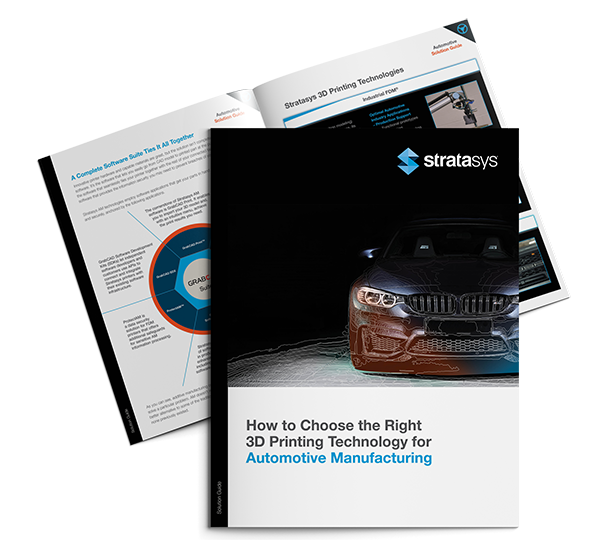Automotive manufacturing has historically been reliant on traditional methods, characterized by heavy upfront tooling and set up, often with long lead times and costly investment into equipment and design.
That’s where additive manufacturing comes into play.
As additive manufacturing continues to emerge as a viable method of manufacturing and production, the automotive industry will continue to benefit. Here are five examples that demonstrate the positive impact additive manufacturing has made to the automotive industry:
Developing Automotive Prototypes with 3D printing at Skorpion Engineering
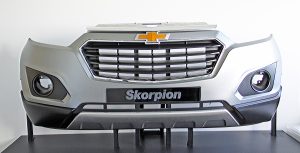 Skorpion Engineering is a pioneer of advanced automotive prototypes. They utilize Stratasys PolyJet and FDM 3D printers to help produce high-performance prototypes and use innovative prototyping to bring conceptual designs to market quickly and stay competitive.
Skorpion Engineering is a pioneer of advanced automotive prototypes. They utilize Stratasys PolyJet and FDM 3D printers to help produce high-performance prototypes and use innovative prototyping to bring conceptual designs to market quickly and stay competitive.
Traditionally parts like bumpers and other structural parts are often outsourced and made from specialty materials such as clay. Due to the fragility of clay parts, transporting them is risky. Such material is fragile and normally requires a specific vendor.
Outsourcing such parts can be costly and time consuming. Any iterations to the initial design only adds to the time and cost required to produce the part.
Skorpion Engineering demonstrated how the production of such parts could be expedited when they 3D printed the 1.4 m / 4.6 ft bumper on its Stratasys Fortus 900mc 3D printer. This reduced turnaround time by a massive 50% compared to traditional methods, enabling it to get the part to its customer quicker than ever before.
Producing High-Performing Automotive Parts for NASCAR
 Due to extreme heat temperatures within the cockpit of vehicles, engineers set out to remedy the condition by cooling the interior of NASCAR’s Next Gen car and meeting temperature and durability requirements and maintaining a competitive cost-per-part for volumes. There was one important caveat: no modifications could be made to the design of the Next Gen car.
Due to extreme heat temperatures within the cockpit of vehicles, engineers set out to remedy the condition by cooling the interior of NASCAR’s Next Gen car and meeting temperature and durability requirements and maintaining a competitive cost-per-part for volumes. There was one important caveat: no modifications could be made to the design of the Next Gen car.
With help from Stratasys application engineers, using SAF™ technology on the H350™ printer, the team came up with a way to achieve this specification.
Stratasys Direct Manufacturing engineers tested various options and recommended NASCAR use SAF™ technology powered by the Stratasys H350™ 3D printer. They came up with a modified ventilation configuration that required over 650 new air ducts and ventilation parts, which would be printed and utilize some sophisticated production methods.
They were printed on the H350, then finished with media that is blasted to clean the parts with the DyeMansion Powershot C, then dyed black on DyeMansion’s DM60, then shot peened with the Powershot S.
The parts were completed in short order and allowed the Next Gen car to participate in the 2022 NASCAR Cup racing season.
Saving Time and Cost in Prototype Fabrication for Volvo Construction Equipment
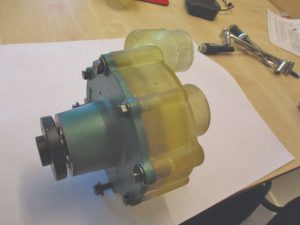 Volvo Construction Equipment (VCE), a manufacturer of heavy construction vehicles, designed a new water pump housing for one of its articulated hauler vehicles. They required a prototype to perform functional testing and validate the new design. Traditionally, tooling costs for such a prototype would have been significant and prohibitive.
Volvo Construction Equipment (VCE), a manufacturer of heavy construction vehicles, designed a new water pump housing for one of its articulated hauler vehicles. They required a prototype to perform functional testing and validate the new design. Traditionally, tooling costs for such a prototype would have been significant and prohibitive.
They utilized 3D printing to print water pump housing prototypes for functional testing. The prototype parts were printed with a Stratasys Objet Eden260V™ 3D printer.
As a result, they were able to print the prototype at a fraction of the cost to produce traditional prototype parts. Plus, they completed testing much sooner than traditional methods would have allowed.
Radford Motors Creates Reliable and Cost-Effective Production for Luxury Vehicles
Radford Motors was to build only 62 units of one of its first run models, with the Radford Lotus Type 62-2 as its prototype production vehicle. Traditional automotive manufacturing, using mass production, was cost prohibitive and out of the question.
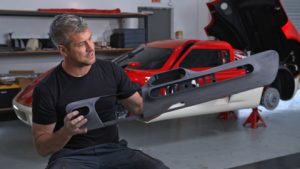 They turned to 3D printing to produce it.
They turned to 3D printing to produce it.
Specifically, they used a large-format Stratasys F770™ and F900™ printers (this included 13 and 18 cubic feet (about twice the volume of a bathtub) of build volume, respectively) with thermoplastic feedstocks for the right strength-to-weight properties needed for making tooling and production parts.
The printer capacity allowed them to use durable, lightweight materials to design, iterate, and build the tooling and components, for each custom vehicle, faster cheaper than any other method.
Read more: How Radford Used GrabCAD Shop to Create Over 500 3D-Printed Car Parts
Lamborghini 3D Prints End-Use Parts and Prototypes
The Italian automotive manufacturer Lamborghini uses 3D printing to keep pace with the entire lifecycle of its parts, from rapid prototyping applications to direct digital manufacturing of end-use parts.
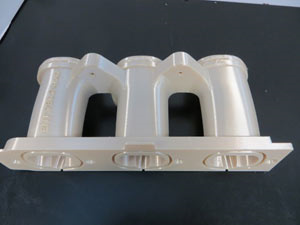 They use Stratasys FDM-based 3D printing technology high-strength end-use parts, durable for high-speed racing. The Stratasys Fortus 3D Production Systems are used to create complex geometries in a very tight timeframe.
They use Stratasys FDM-based 3D printing technology high-strength end-use parts, durable for high-speed racing. The Stratasys Fortus 3D Production Systems are used to create complex geometries in a very tight timeframe.
To fabricate and prototype parts, they used a mix of technology: a Stratasys Dimension 1200es 3D Printer, Stratasys Fortus 360mc Production System and the Fortus 400mc Production System to produce prototype parts such as section bumpers, grills, aesthetic frames and those in the engine bay.
They also used the combination of technologies to fabricate various interior parts that span door panels, seat covers, steering wheels along with aerodynamic components such as conveyors and air heaters.
For Lamborghini, 3D printing is not only a significant cost and time saver, but it greatly enhances workflow efficiency.
3D Printing and the Automotive Industry
There you have it; just a few ways additive manufacturing has helped well-known automotive manufacturers achieve the impossible!
Want to learn how 3D printers can help you achieve your automotive needs? Download the 3D Printer Solution Guide for Automotive Manufacturers. This in-depth guide will help you learn about the benefits additive manufacturing brings to each step of the automotive manufacturing process!



